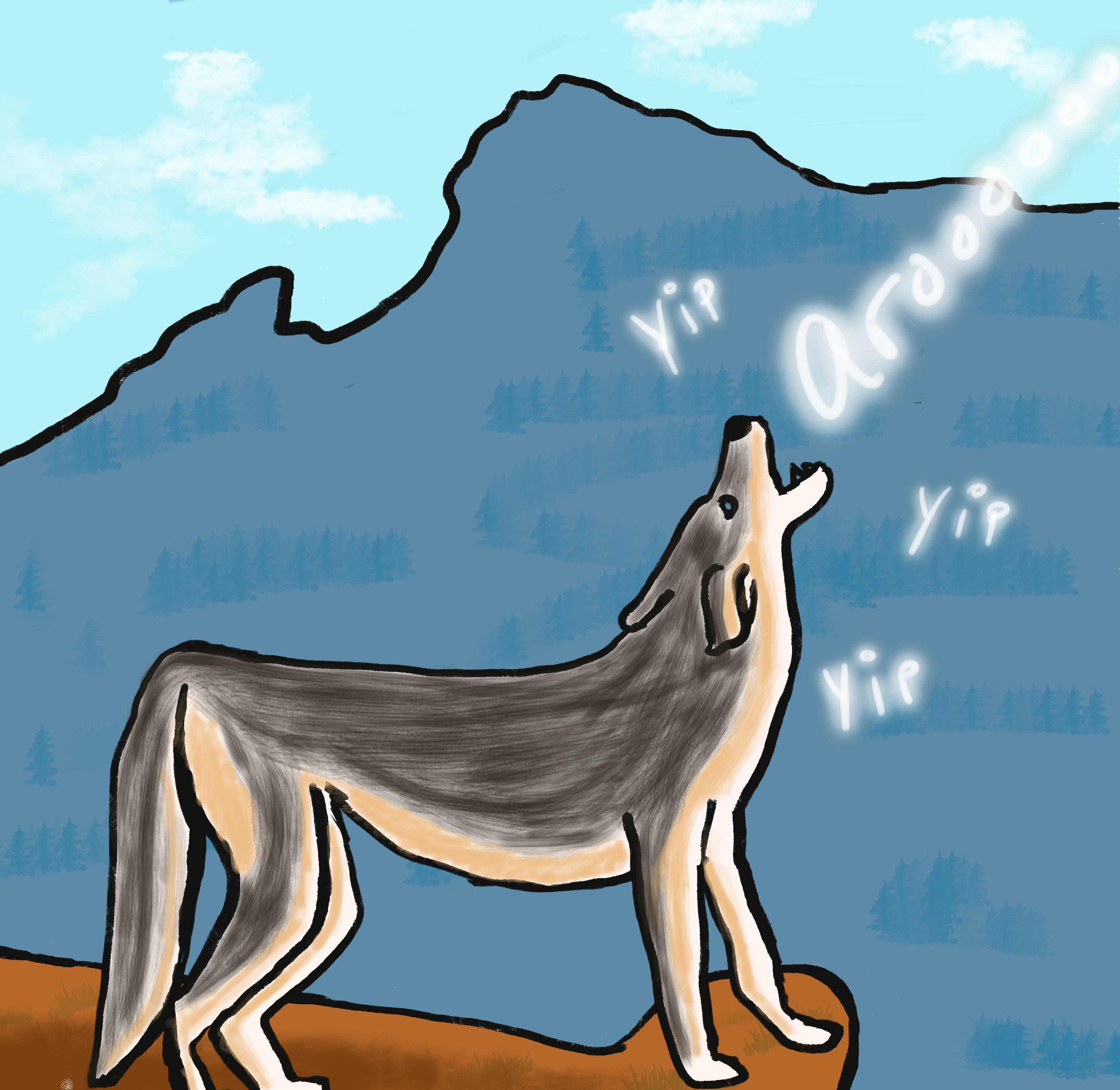103: Coyote
Simply the best
Across the Southwest and Plains, Coyote is a trickster, often a companion of the Creator. For the Southern Ute tribe, now based in Ignacio, Colorado, Coyote’s curiosity and foolishness leads to the creation of the Ute people. To the Zuni, Coyote brought winter by stealing light from the kachinas, while the Diné Bahaneʼ, the Diné (Navajo) creation myth, tells of Coyote creating death. Further south, the Mexica (Aztecs) believed in Huehuecóyotl, “Old Coyote”, a god of mischief and music. At the Palacio de Atetelco in Teotihuacan, there is a beautiful mural of coyote-headed warriors (image from Wikipedia):

I’ve been struggling to write this one because coyotes are my favorite animal and have been since I was very young. I could write so many things about them! Unfortunately Anglo-Americans have had and often continue to have a very negative relationship with these clever, inquisitive, and beautiful animals. Quoting R. R. Lechleitner, “Man has spent thousands of dollars controlling this mammal because of its depredations on livestock… In Colorado the coyote occurs throughout the state from the eastern plains, through the mountains to the western border, and from the lowest to the highest elevations. Much effort has been expended to control or eliminate the coyote from our state, but it has withstood the horse, cow, sheep, plow, gun, 1080, and everything else we have been able to hurl against it. Today, coyotes… can be encountered anywhere within Colorado.”*
In fact, despite that antagonism, coyotes are one of the few native animals who seems to have really thrived in the last few centuries in North America, even expanding their range east to take up habitat once dominated by wolves. Unlike wolves, coyotes easily switch up whether they will hunt alone or in groups (probably because they hunt smaller animals than wolves do). Sometimes they even hunt with friends of other species, like badgers (warning about that video, there’s some violence against ground squirrels in it).
Humans recognize their hunting prowess and try to use their likeness to scare geese. However, as I think I mentioned back in the Canada Geese edition of the newsletter, at least the geese in the park by my house are absolutely not intimidated by these faux-yotes (despite their fur tail and glass eyes!).
I have personally seen coyotes many times, in rural, suburban, and even urban areas throughout Colorado and bordering states. Most notably, I know there is at least one coyote who lives in City Park, in Denver, I think in the little creek area to the south of the Museum of Nature and Science. I often used to encounter that one when I went for a run in the park early in the morning. I also encountered one near Benedict Fountain Park, also in a very urban part of Denver, who my dog Marylebone was deeply interested in (and who was deeply interested in her). They trotted opposite each other with just Tremont Street between them for several blocks.
Perhaps the most common way for people to encounter coyotes is not visually, but aurally – their distinctive yips and howls can be heard many nights in many places around the west. Here’s a good video demonstrating how they sound – but I don’t recommend playing this without headphones if you have a dog in the house!
If you want to learn more, I recommend this older documentary about coyotes in the Lamar Valley in Yellowstone. It’s fun to watch just for all the great coyote footage!
*Wild Mammals of Colorado, 1969, pg. 170
Here’s my attempt at portraying a coyote:
